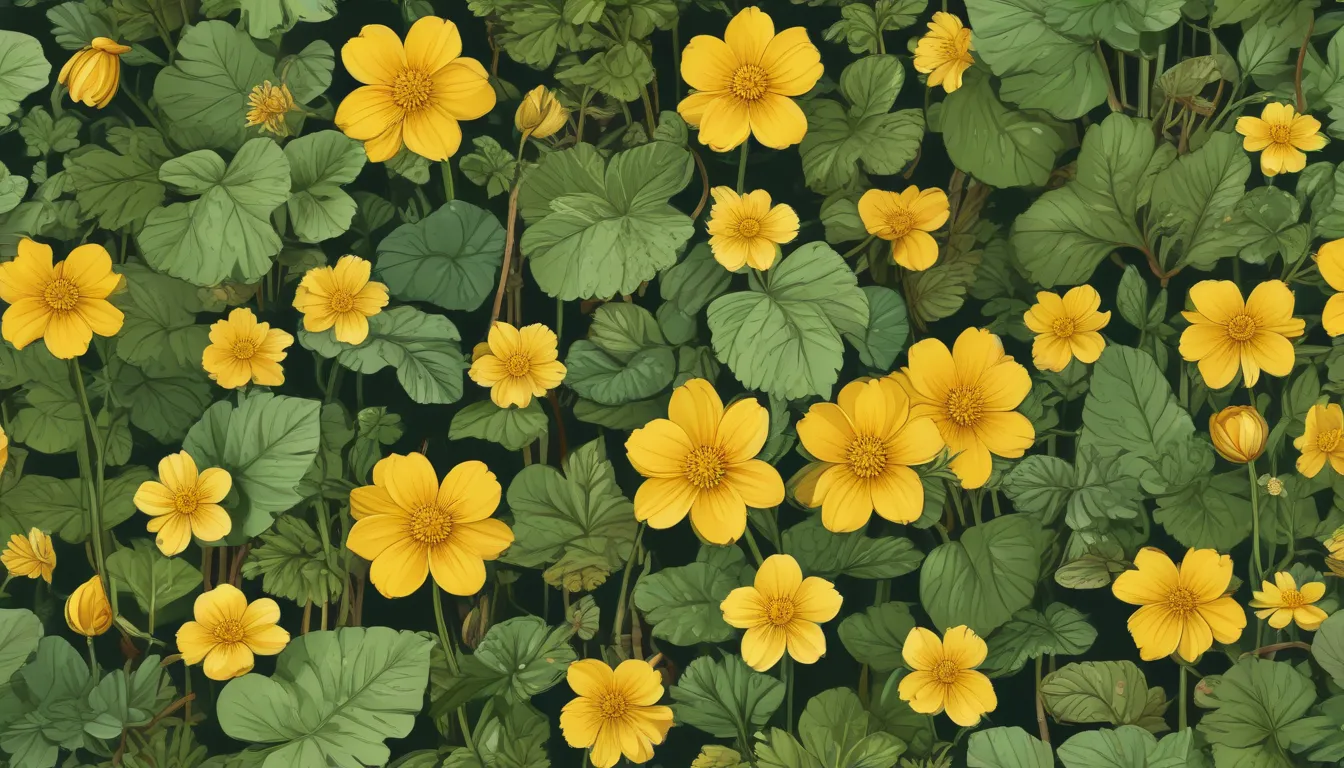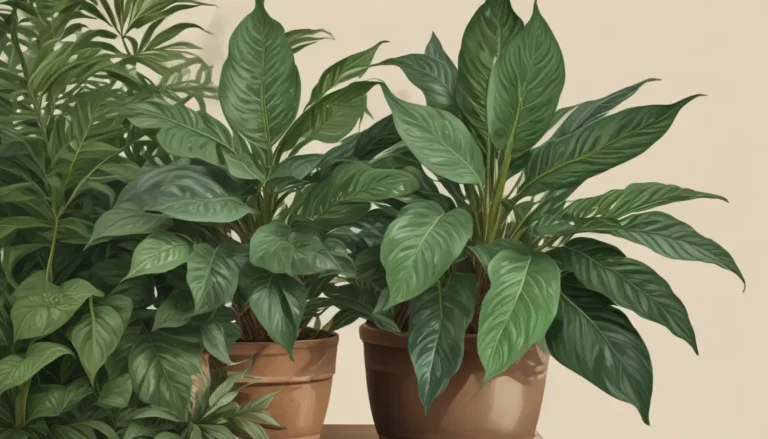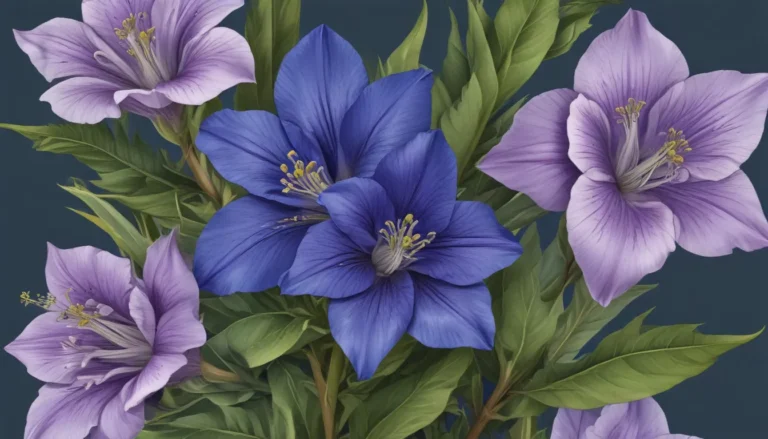The pictures we use in our articles might not show exactly what the words say. We choose these pictures to make you interested in reading more. The pictures work together with the words but don’t take their place. The words still tell you the important facts.
Introduction
Are you curious about the vibrant and fascinating plant known as Marsh Marigold? Also called Caltha palustris, this perennial herb can be found in wetlands, meadows, and along streams and ponds. Its bright yellow flowers and glossy green leaves make it a captivating sight for nature enthusiasts and gardeners alike.
In this article, we will delve into 17 intriguing facts about Marsh Marigold that will deepen your appreciation for this beautiful plant. From its medicinal properties to its ecological significance, there is so much to learn and discover about Marsh Marigold. Let's explore the wonders of this enchanting plant together.
Key Takeaways
- Marsh Marigold is a vibrant perennial plant native to wetlands in Europe and North America. Its bright yellow flowers attract wildlife and hold medicinal and dyeing properties.
- This hardy water-loving plant symbolizes courage and plays a crucial role in wetland ecosystems, providing food and habitat for various organisms, stabilizing soil, and helping improve water quality.
The Fascinating Marsh Marigold
Marsh Marigold’s Scientific Name
The Marsh Marigold, scientifically known as Caltha palustris, belongs to the Ranunculaceae family, adding to its botanical allure.
Native Habitat
Marsh Marigold is native to the wetlands and meadows of Europe, Asia, and North America, thriving in moist environments that many other plants cannot handle.
Bright Yellow Blooms
One of the most captivating features of the Marsh Marigold is its vibrant yellow flowers that bloom in early spring, adding a burst of color to the landscape.
Early Pollinator Magnet
The Marsh Marigold serves as an essential source of nectar for early pollinators like bees and butterflies, playing a vital role in supporting these crucial insects.
Embracing Water Environments
True to its name, the Marsh Marigold flourishes in wet, marshy areas, often found near ponds, streams, and ditches, showcasing its adaptability to water-rich habitats.
Medicinal Marvel
Used in traditional medicine, the Marsh Marigold is valued for its diuretic, anti-inflammatory, and wound-healing properties, highlighting its versatility beyond its ornamental appeal.
Embracing Nature’s Bounty
Resilient Perennial
A testament to its strength, the Marsh Marigold is a hardy perennial that can withstand cold temperatures and thrive in both full sun and partial shade conditions, making it a versatile addition to any landscape.
Wild Visitors
The vibrant flowers of the Marsh Marigold attract a variety of wildlife, from birds to insects, enriching the ecosystem of wetland areas with their presence.
Edible Leaves
While caution must be exercised due to toxins, the young leaves of the Marsh Marigold are edible and can be cooked or used in salads, showcasing the plant's practical culinary potential.
Symbol of Courage
In folklore and mythology, the Marsh Marigold is a symbol of bravery and courage, embodying strength in the face of challenges, adding a touch of symbolic depth to its beauty.
Cultivating Marsh Marigold
Gardening Beauty
Many gardeners cultivate Marsh Marigold in their water gardens or boggy areas, not only for its aesthetic appeal but also for its ability to attract beneficial wildlife, enhancing the ecological balance of the garden.
Rhizome Spreading
Marsh Marigold spreads through underground rhizomes, allowing it to form dense colonies in suitable habitats, showcasing its efficient propagation strategy.
A Name for Every Aesthetic
Known by various names such as Kingcup, Meadow-bright, and Mayflower, Marsh Marigold has captured the imagination of many with its diverse appellations.
Folklore Charms
Intriguing folklore surrounds the Marsh Marigold, where it was believed to possess protective powers and was used to ward off evil spirits, weaving a tapestry of mystique around this enchanting plant.
Eco-Friendly Benefits
Ecological Oasis
Marsh Marigold plays a vital role in wetland ecosystems, offering food and habitat for a host of organisms, while aiding in soil stabilization and erosion prevention, showcasing its pivotal ecological importance.
Dyeing Wonder
The vibrant yellow flowers of the Marsh Marigold can be used to create natural dyes, infusing fabrics and fibers with a beautiful golden hue, showcasing the plant's practical and aesthetic utility.
Water Purification Ally
Given its ability to absorb excess nutrients from water, Marsh Marigold is often incorporated into wetland restoration projects to improve water quality, highlighting its dual role as a botanical and environmental ally.
Embrace the Beauty of Marsh Marigold
As we uncover the intriguing facts about Marsh Marigold, it becomes apparent that this plant is not just a visual delight but a valuable player in the natural world. From its symbolism to its ecological importance, the Marsh Marigold is a gem worth cherishing in wetland habitats.
Conclusion
Marsh Marigold, also known as Caltha palustris, stands out as a captivating plant that thrives in watery environments. Its cheerful yellow blooms, resilience in wetlands, and rich folklore make it a unique and enchanting addition to any landscape.
So, the next time you encounter a marshy area, be sure to keep an eye out for the resplendent Marsh Marigold. Its vibrant flowers and interesting characteristics are sure to captivate you, leaving you with a deeper appreciation for the wonders of nature.
FAQs
Q: What are the optimal growing conditions for Marsh Marigold?
A: Marsh Marigold thrives in environments like marshes, streams, and pond edges, requiring full sun to partial shade and consistently moist soil.
Q: How big do Marsh Marigold plants typically grow?
A: Marsh Marigolds can reach heights of 12-18 inches (30-45 cm) with a spread of 12-24 inches (30-60 cm), though growth may vary based on specific conditions.
Q: Are Marsh Marigold flowers edible?
A: While some sources suggest the flowers are edible, caution is advised due to potential toxicity. Consult experts before consuming any part of the plant.
Q: Can Marsh Marigold be grown in containers?
A: Yes, Marsh Marigold can thrive in containers with proper drainage and soil mix, mimicking its natural habitat with consistent moisture.
Q: Are Marsh Marigold plants invasive?
A: Generally not considered invasive, proper precautions are needed to prevent spread in natural waterways and wetland habitats to protect native species.
Explore More Botanical Wonders
If the allure of Marsh Marigold has sparked your curiosity, why not delve into the fascinating world of other captivating plants? Uncover the incredible adaptations of wetland plants like bulrushes, witness the delicate beauty of Hepatica, or add a burst of sunshine with Yellow Loosestrife. Each plant has a unique story to tell, beckoning you to explore the marvels of the botanical realm.
Have these intriguing facts about Marsh Marigold piqued your interest? Share your love for this enchanting plant and continue your journey of discovery into the natural world with awe-inspiring botanical tales.






